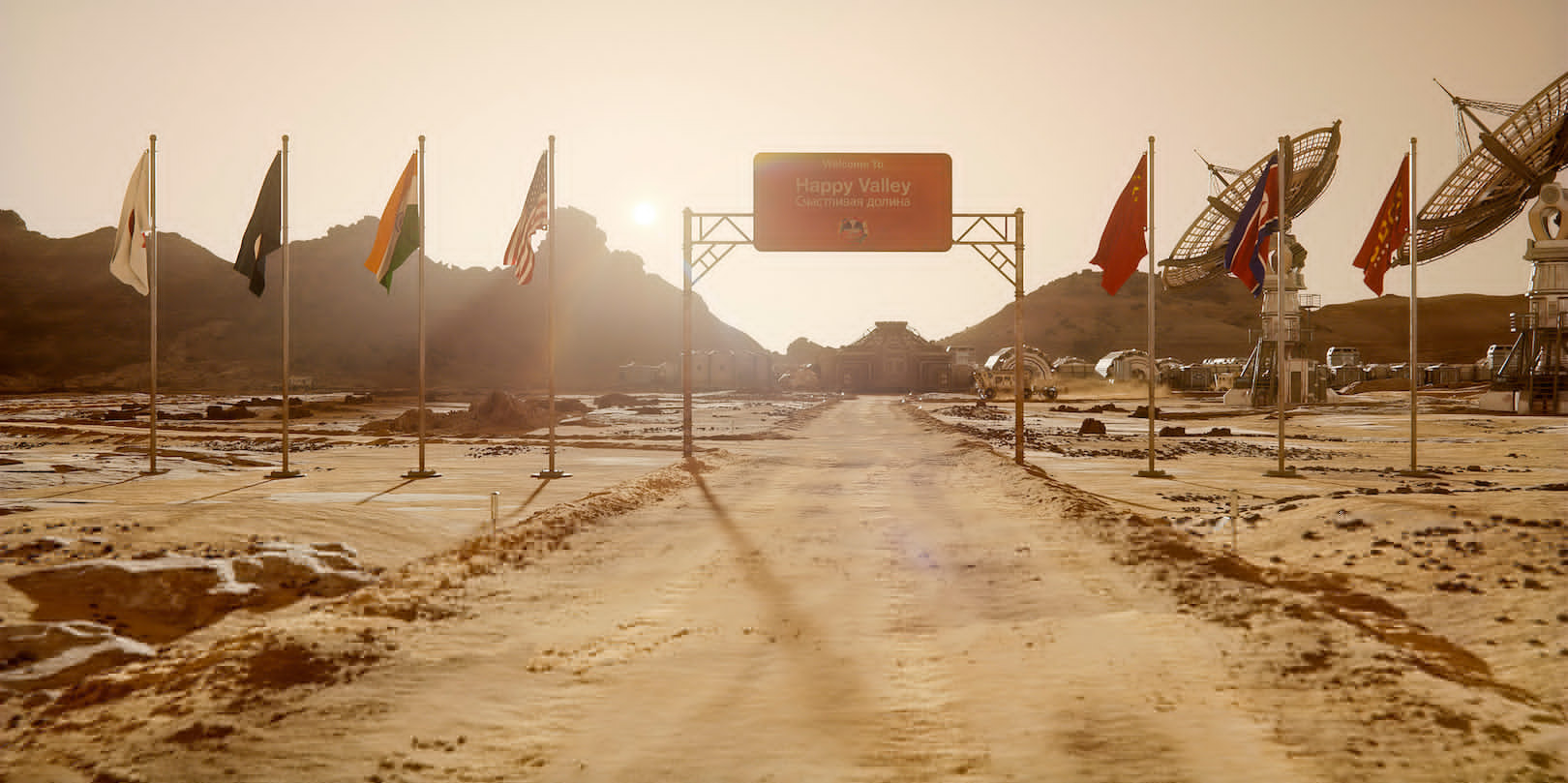‘For All Mankind’ Rockets Into the 2000s in Season 4

Having the opportunity to rewrite 2003 sounds like the millennial dream. And that’s exactly what Apple TV+‘s For All Mankind has the opportunity to do in Season 4, which premieres November 10. However, they’re more interested in colonizing Mars and mining asteroids than creating a world where dresses over low rise jeans and razor-thin eyebrows aren’t a thing. To each their own! Speaking to a roundtable of reporters at the 2023 New York Comic-Con, For All Mankind‘s producers and creatives spoke to The Mary Sue about the upcoming season, which takes the series that began in an alternate 1960s all the way to the new millennium.
The show hasn’t caught up to today yet, obviously. For All Mankind began by asking, “What if the Soviet Union landed on the moon first? What if the space race never ended?” It has been steadily creeping and jumping towards the present ever since. An alternative 2003 is still a version of the past. However, due to the changes along the way, it’s as innovative as it is nostalgic. “The nature of the show always was that it’s gonna turn from kind of a period drama into science fiction,” said executive producer Ben Nedivi.
“You started feeling it in [Season 3],” continued Nedivi. “But I think this season especially has become a science fiction show more and more. And I think for us, the 2000s … we always liked the idea of showing the colonization of Mars in a real way. Not just the early outposts, but hundreds of people on a planet and what that would mean to live there. We kind of go into this thinking about what it would feel like for us to be there, and what would be the daily struggles, and what would be the issues. That fascinates us about getting to a place that we feel we earned by getting to the 2000s.” I don’t know about you, but I remember folks talking a lot about Mars in the ’00s. I can’t imagine what it would have been like if people actually lived there at the time.
Colonizing Mars also means being closer to the asteroid belt, which opens up even more possibilities. “As the show goes,” he said, “the opportunities to do things that we as humans haven’t done yet are gonna grow.” The asteroid belt in particular excited executive producer and show creator Ronald D. Moore. “What would that really be like,” said Moore. “There’s been various film and television pieces that have gone to asteroids, from Armageddon (which I guess isn’t an asteroid) to The Expanse, which did a lot in it. [So] what’s our take on that, and how do we play the physics of asteroid mining and what would it look like in our history?”
You may know Moore’s work from Star Trek: The Next Generation, Battlestar Galactica, and Outlander. He’s a titan of science fiction, alternative timelines/time travel, and old age makeup. With For All Mankind, there’s also the Soviet Union of it all. The global power has played a pivotal role in the series. However, season 4 is the first time the show has actually gone there. “I thought going behind the Iron Curtain with Margot and seeing what the Soviet Union had become in the early two thousands was really interesting and fun to play with,” said Moore.
Naturally, a lot of the technology has surpassed where we are even today in the 2020s. “Some things haven’t been invented yet,” said production designer Seth Reed. He created not just the Mars colony set but the technology you see on screen as well. “[Some things] that we built on Mars haven’t even been done yet.” It’s a potpourri of old and new. On Earth, the characters use screen devices that look advanced for the “2003” we remember. But they run browsers akin to Netscape Navigator.
They also set some rules and limitations for this alternative universe. “For example,” continued Reed. “We couldn’t 3D print anything. A decision was made, even though it’s the early 2000s, no 3D printing yet. Maybe ten years later. So when you see the show, some things you identify immediately because culturally they’re part of your current day and some things haven’t been seen yet. Like, we’re talking about fusion drives for spaceships, and what the spaceships look like, don’t look like anything you’ve seen before. And then some things are completely retro.”
“I wish it was real,” added Garrett Reisman, For All Mankind‘s NASA tech advisor. “We can go back and redo the ’90s.” Wouldn’t that be something?
(featured image: Apple TV+)
Have a tip we should know? tips@themarysue.com